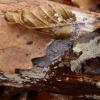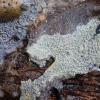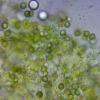
20-12-2025 15:47
Mirek GrycHi.These grew on pine wood that was heavily covere

18-12-2025 21:17
Pol DebaenstThe identification took me to Byssonectria deformi

15-12-2025 07:09
 Danny Newman
Danny Newman
indet. Rutstroemiaceae sp. on unk. fallen leavesMc

19-12-2025 10:10
Patrice TANCHAUDBonjour, récolte réalisée en milieu dunaire, a

18-12-2025 17:23
 Bruno Coué
Bruno Coué
Bonjour,je serais heureux d'avoir votre avis sur c

18-12-2025 18:07
Margot en Geert VullingsThese plumes were found on rotten wood.They strong

17-12-2025 18:35
 Michel Hairaud
Michel Hairaud
Bonjour à tous/Hi to everyone I am passing along

15-12-2025 15:48
 Danny Newman
Danny Newman
Melanospora cf. lagenaria on old, rotting, fallen

... under a twig of deciduous tree (likely Quercus or Carpinus) on the ground in a decidous mixed forest on acid soil - in the National Park of Eifel, Germany, 13.11.2019.
I found the macroscopical appearance quite striking - and so I hope somebody can provide me with a hint. The conidia are bluish and distantly warted, about 4,8-5,5 µm.
Best, Lothar

Saludos,
Carlos
cheers

Hello Carlos and Thomas,
oh yes - you could be right. Always when I find a lot of spores and not too many other structures, I am seduced to think of an anamorph. I will re-examine and try to find basidia, and look the spores in KOH.
Thanks and best regards, Lothar

I was too fast here - yes, it is a "simple" basdiomycete, and yes, an Amaurodon. I come to A. viridis, the hyphae are clamped, and the spores are fitting.
Thanks again, and best regards, Lothar


Hello Ludo,
the structure of this Amaurodon is not at all ceraceous but quite filamentous, and easy to separate from the substrate and to pull apart into fluffy pieces. Structures similar to this you can easily find in anamorphs of ascomycetes.
Best regards, Lothar

I must be mistaken in what ceraceous refers to. I though it just refer to a 'waxy' appearance.
If I may reformulate my question: do you know any resupinate hyphomycete (asco) in which the sporulating surface is organized like a hymenium? I know it wouldn't qualify as a 'hymenium' in the absence of meiosporangia, but I wonder what, other than setae, may represent sterile hyphae intermingled with conidiophores/ conidiogenous cells in 'resupinate' ascos?
Cheers,
Ludo






